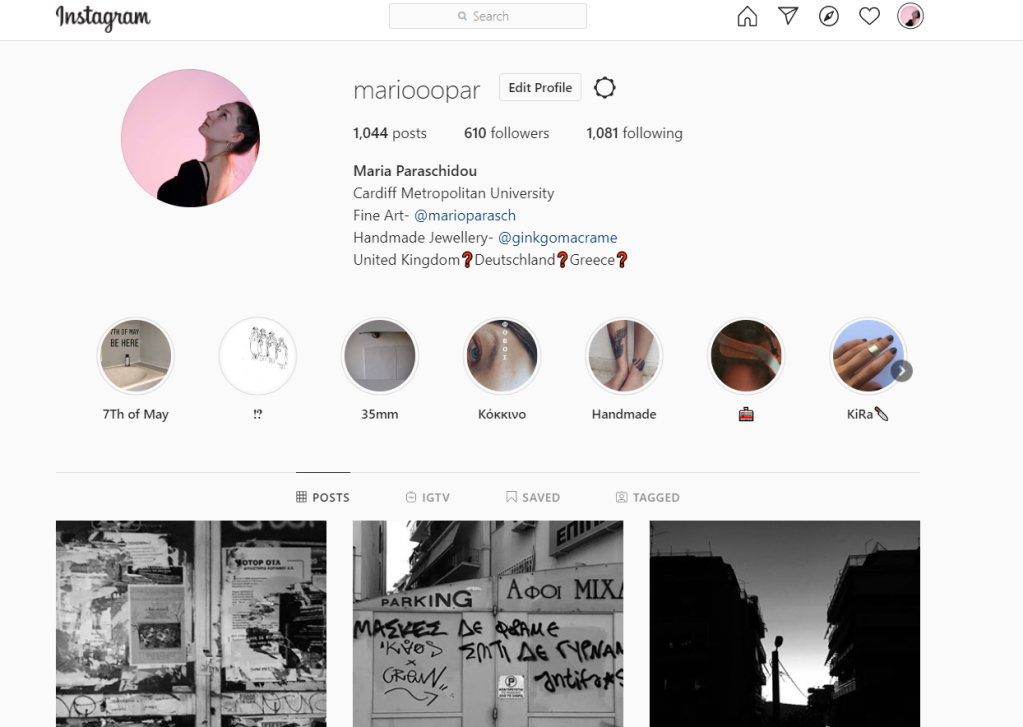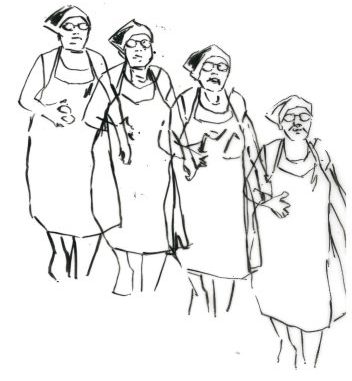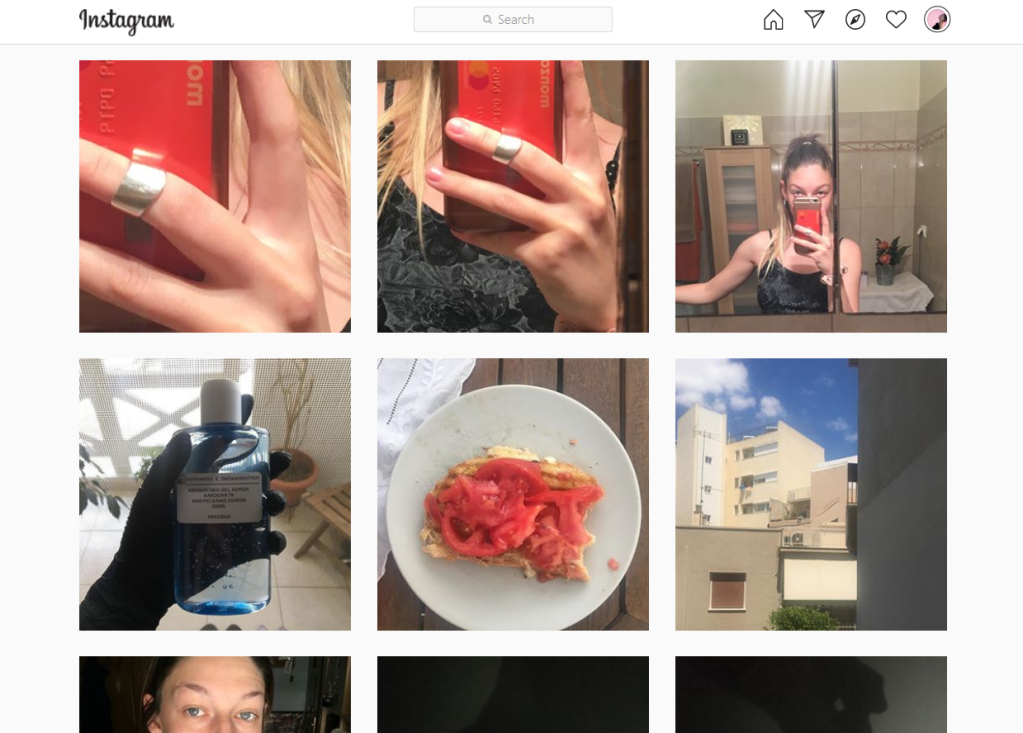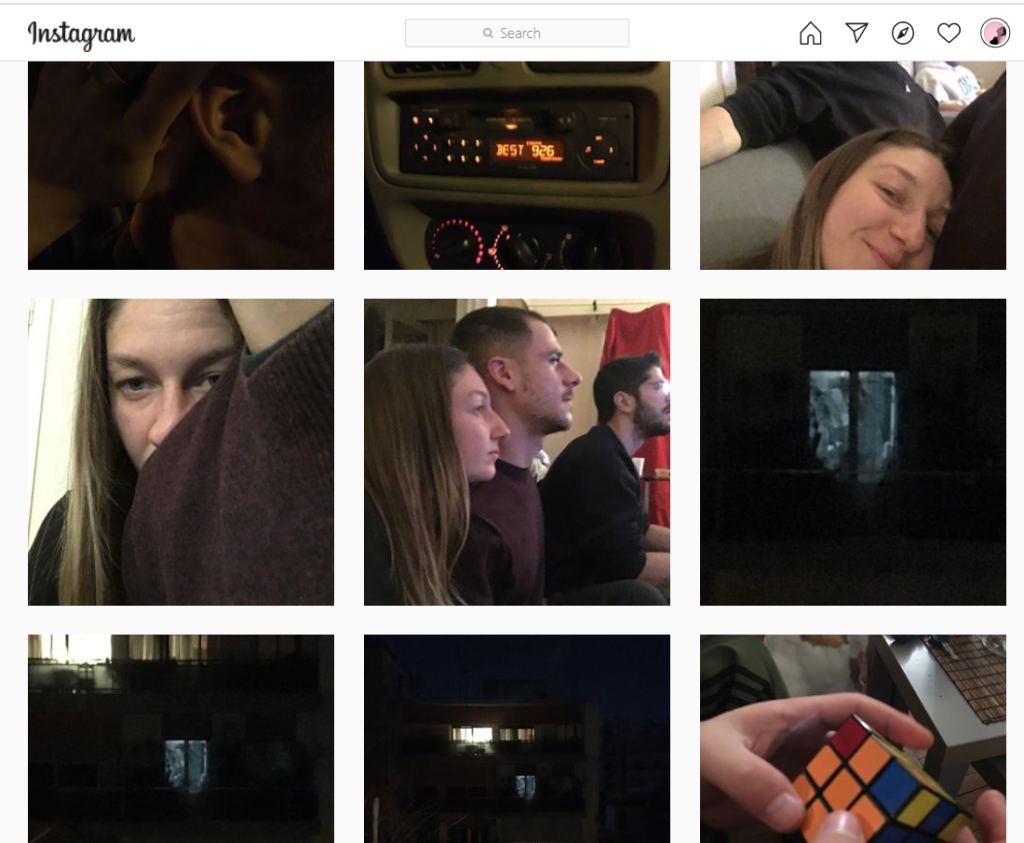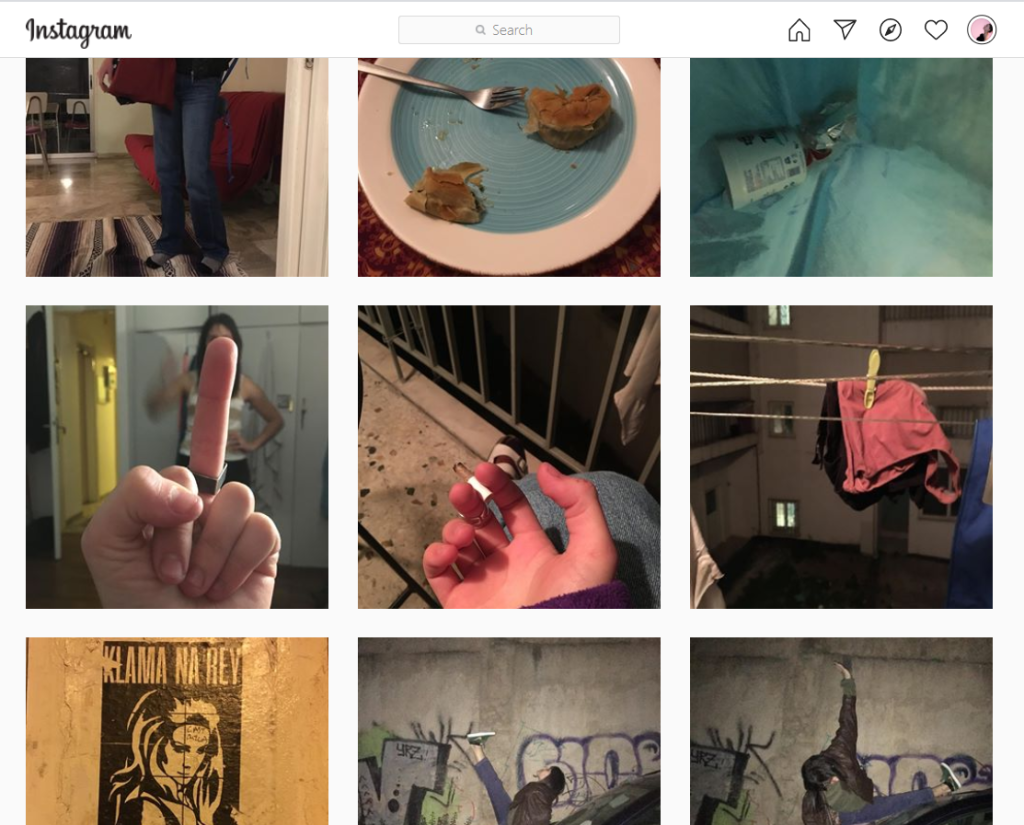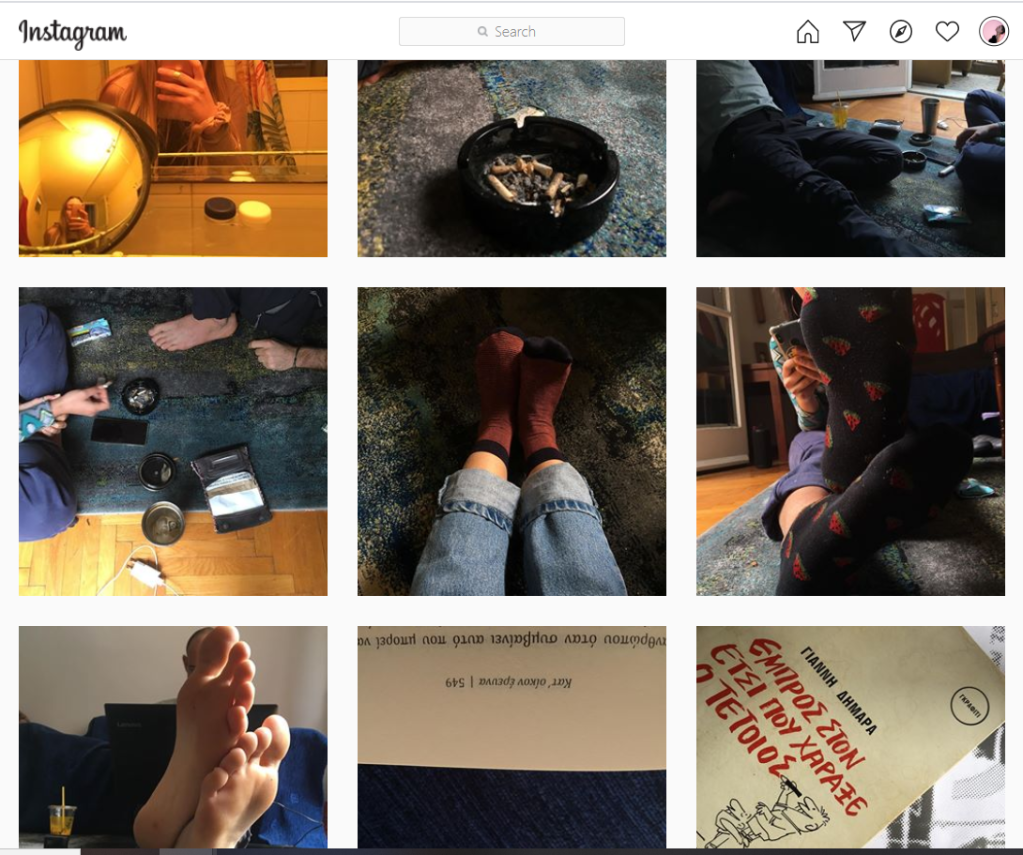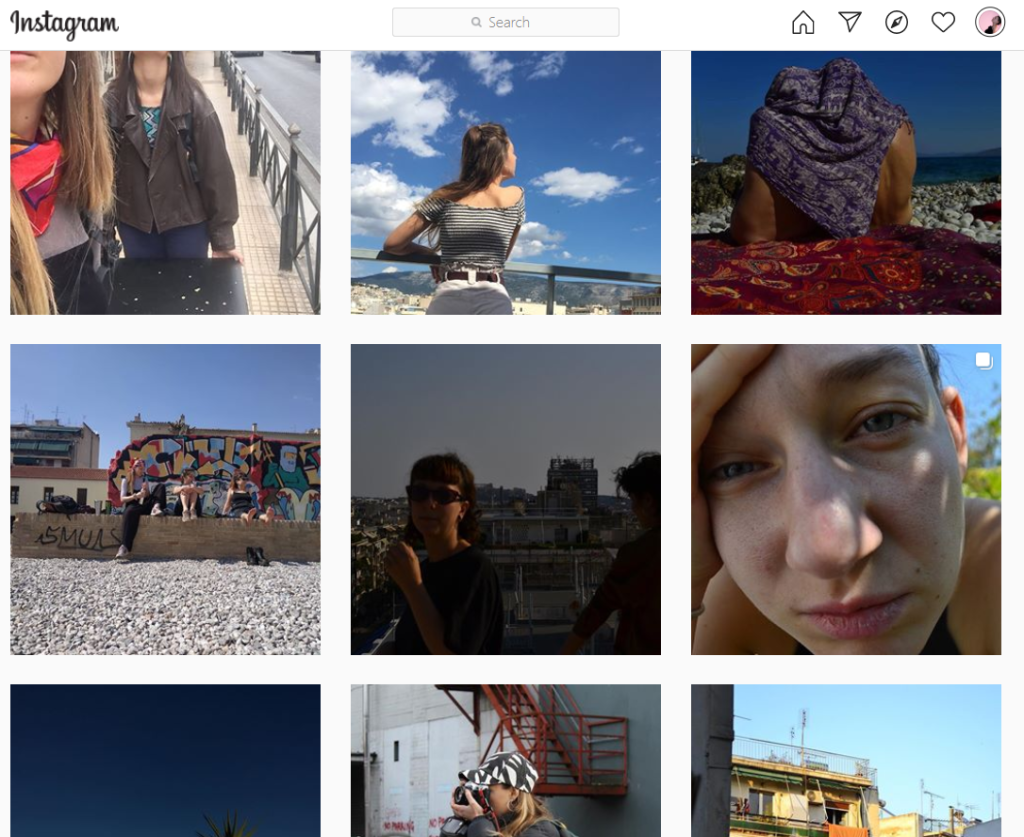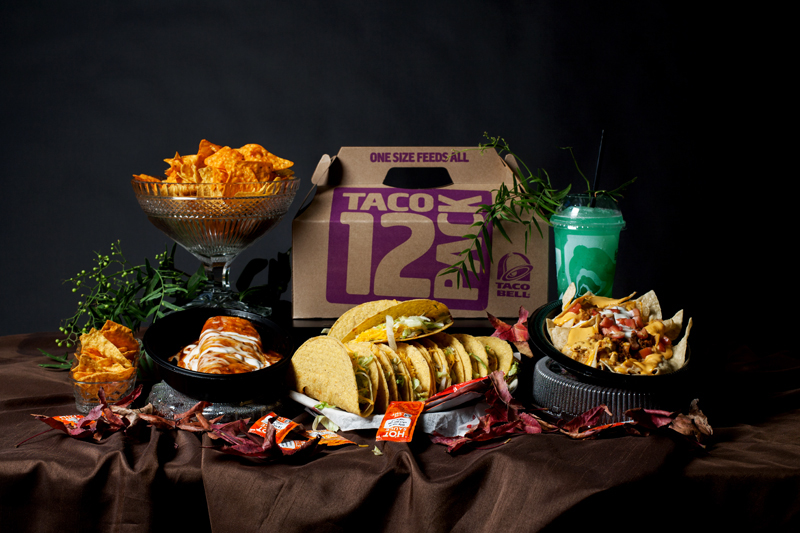Maria Paraschidou
BA (HONS) Fine Art
marioparasch@gmail.com
07594700802
mariaparaschidou.wordpress.com
My practice is about exploring the streets that we live in. I believe that we ignore the power that we have to challenge and change the norms of how public space is perceived and configured. My art tries to unveil the uniqueness of urban reality as well as its relationship with the contemporary human.
My work is currently embodied in three different ways of image-making. Black and white film photography, high-quality digital photography, and low-quality phone photography. Through film photography, I found a way of protesting against my addiction to fast art and fast image creation. I slowed down and observed more. The slow image-making procedure of film photography enables me to spotlight the pleasant monotony of every single experience. By framing little details that surround me on my everyday routine, I try to highlight the ignored and the not important. Inspired by the overwhelming bombarding of information through social media, I wanted to throw my work into a new experience, outside my safe zone. The limited number of images that can be captured through film photography forces me to pay attention to the framed material, thus, uncover a unique beauty of reality.
However, due to Covid-19, I was forced to change my practice. Being unable to interact within the street and develop my films, I was forced to use digital cameras and capture my “house experience” during the lockdown. Contrastingly, I chose to overuse digital photography and create countless images of similar objects and scenes inside my personal living space.
Influenced by the current situation of Covid-19 and the countless information bombarding social media, I forced myself to deeper explore the contemporary nature of exposure of privacy and everyday routine on social media. Thus, I exposed myself through a 24hour Instagram performance during which I recursively posted numerous spontaneous, non-premeditated, low-quality phone images every ten minutes. Through my practice I question fundamental qualities and addictions of contemporary life.
Notes and Unfinished concept ideas:
Frequently, I call myself a painter, I recently stopped painting.
My need to be an artist derives from my necessity of observing very carefully everything that surrounds me. I currently use different kinds of photography exploring slow and fast creation of image as well as the relationship between black and white film photography, high-quality digital photography, and low-quality phone photography. I am interested in the desire that people have of capturing reality yet alternating and editing it afterward.
Through black and white film photography, I was able to unveil the nostalgic side of the image resembling times when you needed to carefully appoint and frame. Hence, the slow prosses of image-making can reveal a lot more than what can be seen, feelings and imagination. A single frame can be developed in different intensities and create various shapes and shades, that uncover a whole new world of little details. Consequently, the image can be transformed from a caption of reality to an artwork reminding different decades.
Digital photography and phone photography on the other hand, force me to explore the contemporary representation of objects and the human form. Vivid color and numerous different images of the same frame uncover addictions and obsessions of the 21st century.
Influenced by the current situation of Covid-19, I forced myself to deeper explore the contemporary nature of image-making of self-representation and everyday routine on social media. By exposing myself through a 24hour Instagram performance of recursively posting images every ten minutes, I questioned fundamental qualities and addictions.
Exploring the exact opposite of what I used to do before Covid-19
My work is about exploring the streets that we live in. I believe that we ignore the power that we have to challenge and change our fundamental norms of public space and our civic landscape. My art tries to unveil the uniqueness of urban reality as well as its relationship with the contemporary human.
My work is currently embodied in three different ways of image-making. Balck and white film photography, high-quality digital photography, and low-quality phone photography. Through film photography, I found a way of protesting against my addiction to fast art and fast image creation. I slowed down and observed more. The slow image-making procedure of film photography enables me to spotlight the monotony and pleasure of every single experience. By framing little details that surround me on my everyday routine, I try to highlight the ignored and the not important. Inspired by the overwhelming bombarding of information through social media, I wanted to throw my work into a new, out of my safe zone, experience. The limited number of images that can be captured through film photography forces me to pay attention to the framed material, thus, uncover a unique beauty of reality.
However, due to Covid-19, I was forced to change my practice. Being unable to interact within the street and develop my films I was forced to use digital cameras and capture my “house experience” during the lockdown. Contrastingly, I chose to overuse digital photography and create countless images of similar objects and landscapes of the house.
Influenced by the current situation of Covid-19 and the bombarded social media with countless information, I forced myself to deeper explore the contemporary nature of image-making of self-representation and everyday routine on social media. By exposing myself through a 24hour Instagram performance of recursively posting numerous low phone quality images every ten minutes, of the particular moment with no previous observation of the environment or planing, I questioned fundamental qualities and addictions of contemporary life.
The final one
